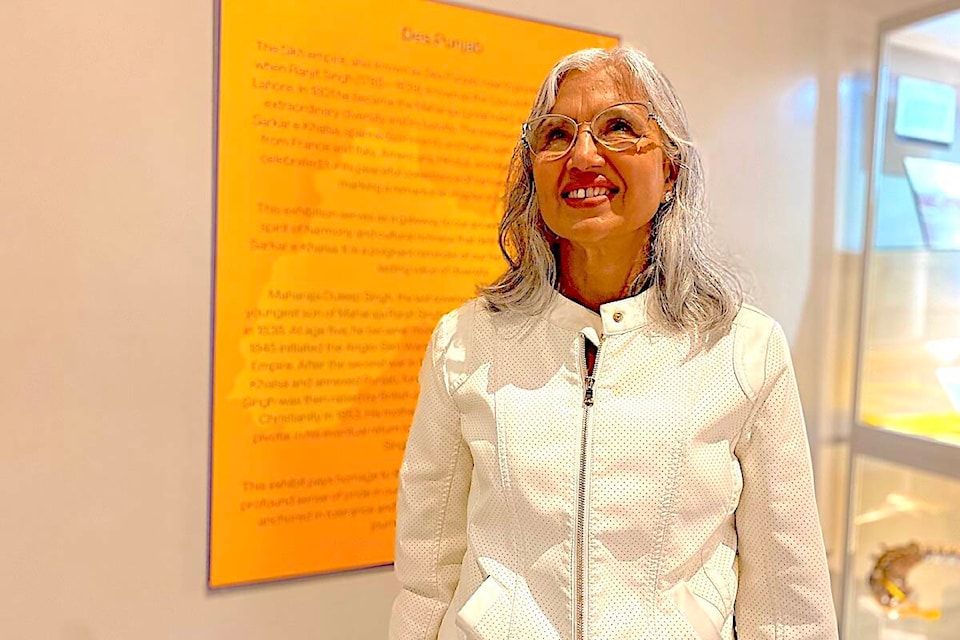This spring and summer, in-person and online engagement sessions focus on creating a museum in B.C. to celebrate Canadians of South Asian heritages.
The website engage.gov.bc.ca/southasiancanadianmuseum is where people can upload written or video submissions and complete a survey.
Surrey resident Dr. Balbir Gurm co-chairs a 13-member ministerial advisory committee tasked with gathering public input about the project.
“The B.C. government promised to build a museum, but the engagement is all about trying to figure out what the objectives should be, and should it be a museum/cultural centre,” Gurm said.
“What kind of space should it be, that’s another question, and then what do we want to call it, and where do you want it built? There are lots of questions on the (survey), that’s just a few of them.”
• RELATED: Plans for B.C.’s South Asian Canadian museum take shape with public input.
No construction timeline is given for the museum, plans for which date back to the provincial election campaign of October 2020, when the BC NDP promised to build a museum in Surrey devoted to B.C.’s South Asian history.
The museum will be the first of its kind in Canada, according to B.C. Premier David Eby, and will “preserve the rich history of the diverse South Asian communities in this province for generations to come.” Eby made the statement May 23, 2024, the 110th anniversary of the Komagata Maru ship incident in Vancouver.
At Surrey City Hall on April 2, the day the B.C. government launched expanded public engagement focused on the project, a group called Museum Liberation Force hosted a meeting that aimed to push for the quicker creation of the museum.
The museum concept has been criticized by some for using a broad term “South Asian,” but Gurm is quick to defend what’s considered a “temporary working name” for the facility.
“The criticism is that ‘South Asian’ does not reflect a person,” Gurm said. “South Asia is a place, a space made up of seven countries. So when we’re talking about the museum, not only are we talking about that, but we’re talking about people who might have gone from there to Africa and then to Canada or there to England and then to Kenya and then to Canada. So it’s hard to describe who it is, other than it’s people from an area. That’s why we call it South Asian, to reflect all those people in that area.”
Gurm, born in the village of Mangata, Punjab, India, grew up in Vancouver. Today, she’s an award-winning nursing instructor at Kwantlen Polytechnic University (KPU) who is involved in history and museum projects.
Feedback will be summarized into a report published later this year, possibly before the B.C. election on Oct. 19.
“We’re hoping that by September we would have a report on the engagement so that we can inform government as to what we want,” said Gurm, who co-chairs the advisory committee with Am Johal.
“Politically, with government cycles, you know that during election time they’re probably going to promise you more things than when they’re sitting in session.”
The current round of engagement will be a good reflection of what the community thinks, Gurm hopes. The more people respond, “the better the data and the better the decision,” she added, “because if nobody bothers to engage, then you’ve just got people sitting around a table, you know, like myself and others that are on the committee deciding, and I didn’t want that.”
So far, Gurm says people prefer either Vancouver or Surrey for the museum location.
“It would be great for Surrey,” she underlined. “I do teach at KPU, and KPU has multiple campuses where we have space. It could be a partnership between the province and KPU, you know. It’s an educational facility, and if there are lull times at the museum, then the university could use it (the space). But again, it’s a biased opinion and I will be the first to admit that.”
The creation of such a museum is important, Gurm said, because when she was growing up, “there was nothing reflected in our history books about contributions of South Asians. They were written from a very Western European perspective, and so that change is needed because if we look at self-identity, self-concept, it’s important to know who we are and where we come from. And when we don’t have that, it has an impact on health. And if you don’t have a healthy person, you’re really not gonna be a good citizen, so to me, it’s really important that we do try to do these types of things.”



